Fire Protection Engineering Laboratory
The fire protection engineering laboratory is equipped with various standard methods for assessing the flammability of materials, including, a cone calorimeter, microscale combustion calorimeter (MCC), limiting oxygen index (LOI), and a fire furnace. It is utilized as an educational laboratory for both undergraduate and graduate courses in fire dynamics.
Fire Furnace
The fire furnace is one of only about ten of its kind worldwide. This specialized furnace enables advanced measurements to be conducted to assess how structural elements made of steel, concrete, and wood respond to both load and fire. The heating rate of the furnace follows the ISO 834 temperature-time curve.
The furnace provides an invaluable resource for aspiring fire engineers, offering practical laboratory experiences in a safe environment. Here, students can observe firsthand the effects of fire on structural integrity, learning how various design and dimensional factors influence a building's resilience to fire damage.
The furnace at our university stands as the sole facility of its kind in Sweden. Beyond academic pursuits, it also serves as a hub for product development, particularly for structures exposed to both load and fire.
We extend our gratitude to the supporters who have made this facility possible. Funding from the NSS project on security, the European Union's regional funds, the Kempestiftelserna, and the institution's strategic funds have been instrumental in establishing and maintaining the fire furnace.
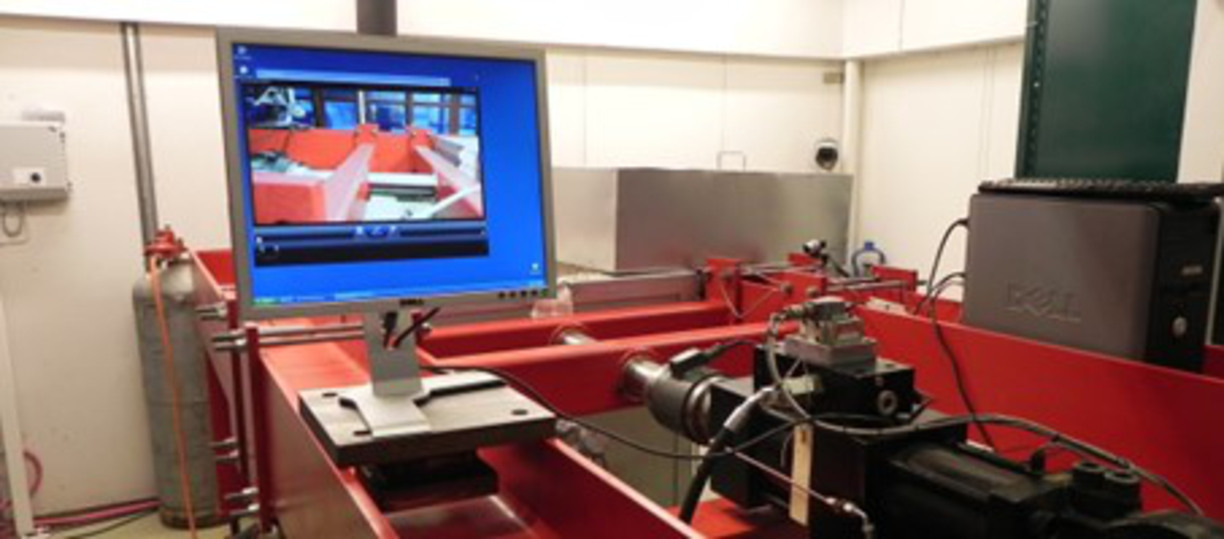
A picture of the fire furnace in the MCE Lab
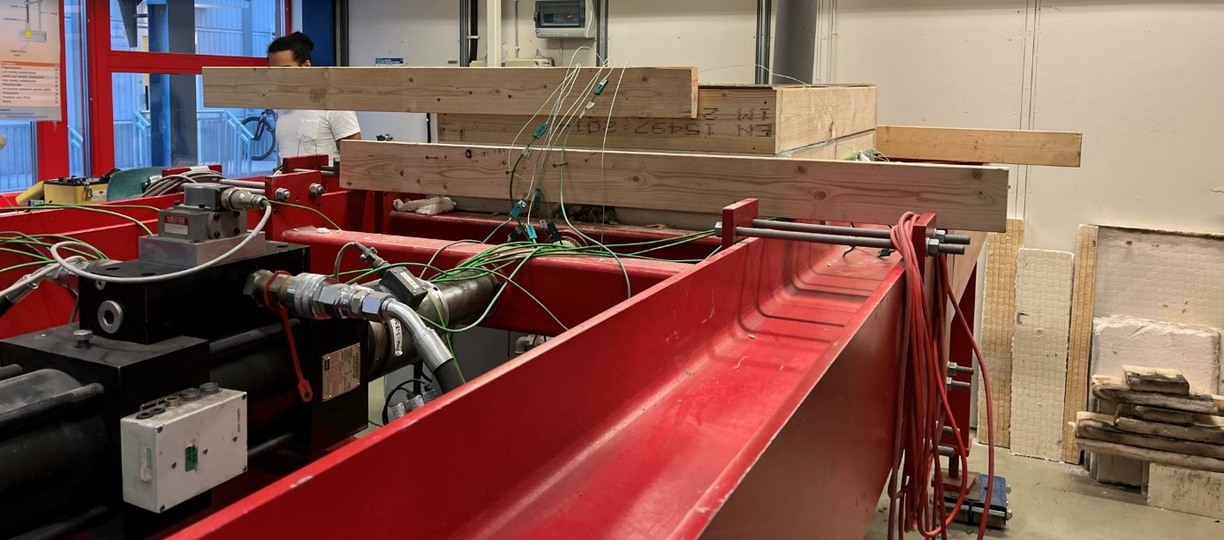
A picture of the fire furnace with a mounted wooden roofing element ready to be tested.
Cone calorimeter
We have a NETZSCH-GERÄTEBAU GMBH TCC 918 cone calorimeter, an instrument designed to provide information on the reaction-to-fire properties of various materials. This instrument adheres to the ISO 5660 standard, ensuring precision and reliability in our experiments.
Principle of Operation
The cone calorimeter functions by subjecting samples to one-dimensional radiative heat, akin to the coil temperature set by the user. With a heat flux/irradiance spanning from 0 to 100 kW/m², it simulates realistic fire conditions. As the sample undergoes decomposition, pyrolysis gases mix with oxygen, forming a combustible mixture that is ignited by a spark from the igniter. The ensuing burning process consumes oxygen, allowing for the calculation of the heat release rate. Concurrently, the smoke and soot produced are analyzed in the exhaust duct.
Cone Calorimeter Measurements
The cone calorimeter facilitates precise measurement of various parameters, including Heat Release Rate, Mass Loss Rate, Time to Ignition, Smoke Production Rate, and Total Heat Released.
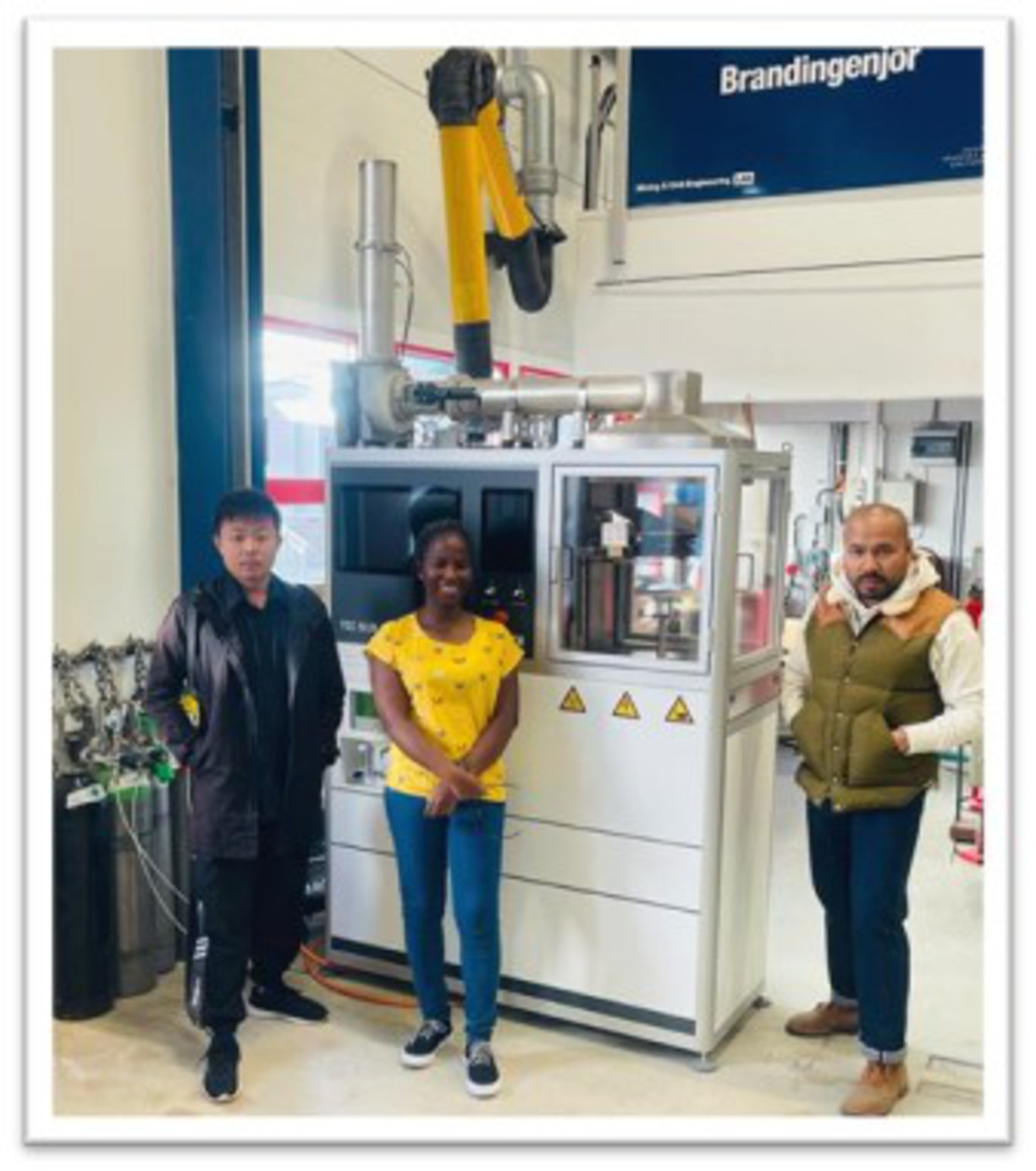
The cone calorimeter in the MCE Lab
Microscale Combustion Calorimeter (MCC)
At the MCE laboratory, we are equipped with a microcalorimeter from Fire Testing Technology. This apparatus is pivotal in providing heat-release properties of various materials, providing insights for student education, research, and material development initiatives.
MCC Apparatus Overview
The MCC apparatus is specifically designed to measure the heat release rate of milligram samples ranging from 0.5 to 50 mg. It operates under controlled heating rates, capturing variations in heat release as a function of time and temperature. The test methodologies adhere to the standards outlined in ASTM D7309-19, ensuring consistency and reliability in our experimental procedures.
Test Principles
The MCC operates on the principle of controlled heating, typically at rates of 1 oC/s, inducing pyrolysis or decomposition of the sample. During this process, volatile gases released from the sample mix with oxygen, facilitating combustion. The amount of oxygen consumed during combustion serves as a key parameter for calculating both the quantity and rate of heat release.
Test Methods
The MCC offers two distinct test methods:
- Method A
Focuses on thermal decomposition, where pyrolysis occurs within a completely inert atmosphere, allowing for the study of pure decomposition processes. - Method B
Targets thermal-oxidative decomposition, conducted in an oxidizing environment to mimic real-world combustion scenarios.
MCC Measurements
Key measurements obtained from MCC experiments include heat release rate, heat release capacity, total heat released, char yield, temperature, and time of heat release.
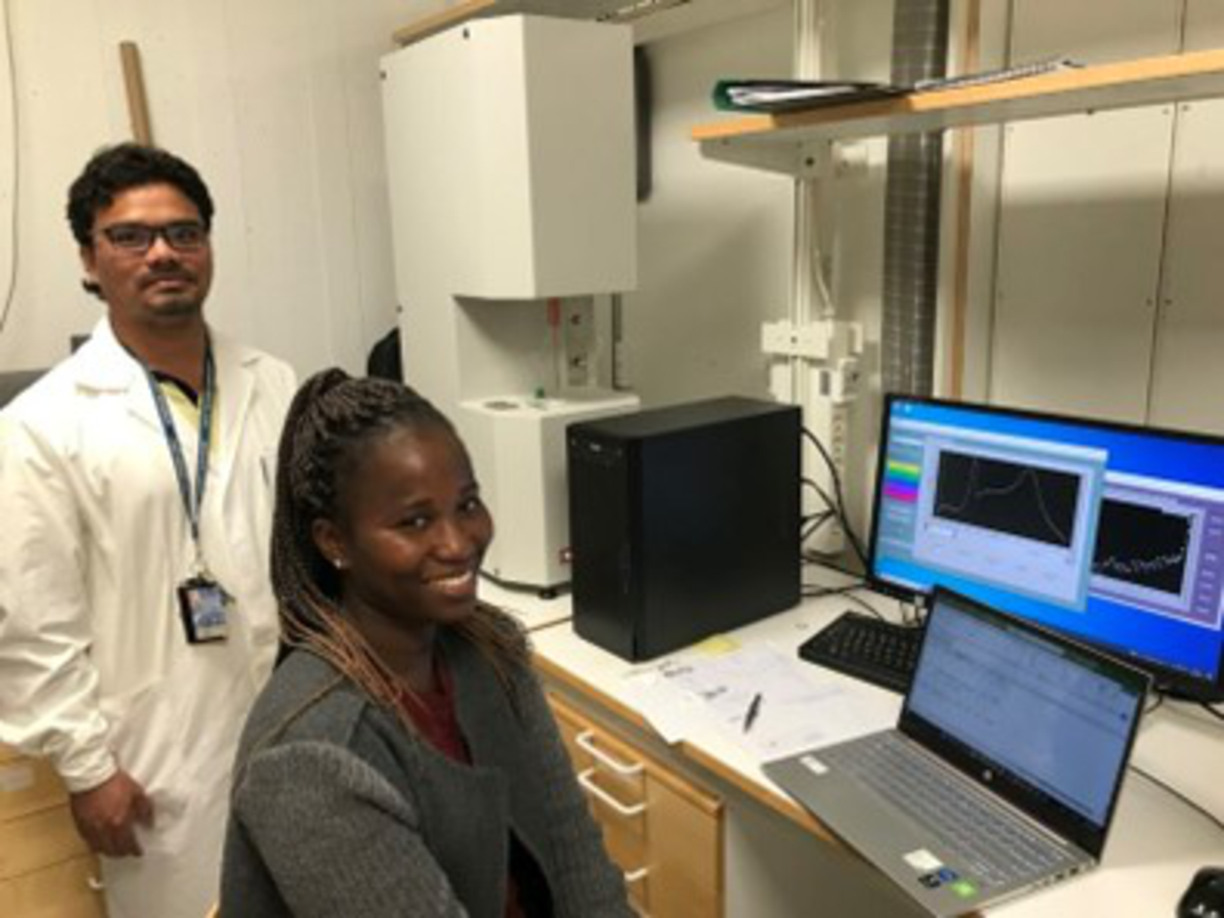
The MCC apparatus in the MCE lab and a schematic diagram of the instrument.
Limiting Oxygen Index (LOI)
The MCE lab is equipped with an LOI 901 Oxygen Index Analyzer from NETZSCH-GERÄTEBAU GMBH. This apparatus is used in evaluating the minimum oxygen concentration in the test atmosphere to support the ignition and flaming combustion of a sample. The LOI testing method, including specimen preparation and measurement, follows international standards such as ASTM D2863, ISO 4589-2, and NES 714. The LOI values obtained serve as metrics for ranking and comparing the flammability of different materials.
Principle of Operation
The LOI tester comprises a vertical glass chimney and a control unit. The heat-resistant glass tube of the chimney measures either 450 or 500 mm in height and 75 or 100 mm in diameter, accommodating various specimen sizes depending on the material forms. Within the chimney, a mixture of oxygen and nitrogen flows upward towards a vertical specimen. The upper end of the specimen is ignited by a gas flame from an igniter, and subsequent burning behavior is observed.
Measurement Techniques
LOI can be measured using either surface ignition or propagating ignition methods. In surface ignition, the upper surface of the specimen is directly ignited to assess its flammability characteristics. In propagating ignition, the flame propagates along the length of the specimen, providing insights into its flame propagation properties. Oxygen concentration in the test atmosphere is monitored using a paramagnetic oxygen analyzer, ensuring precise and accurate measurements throughout the testing process.
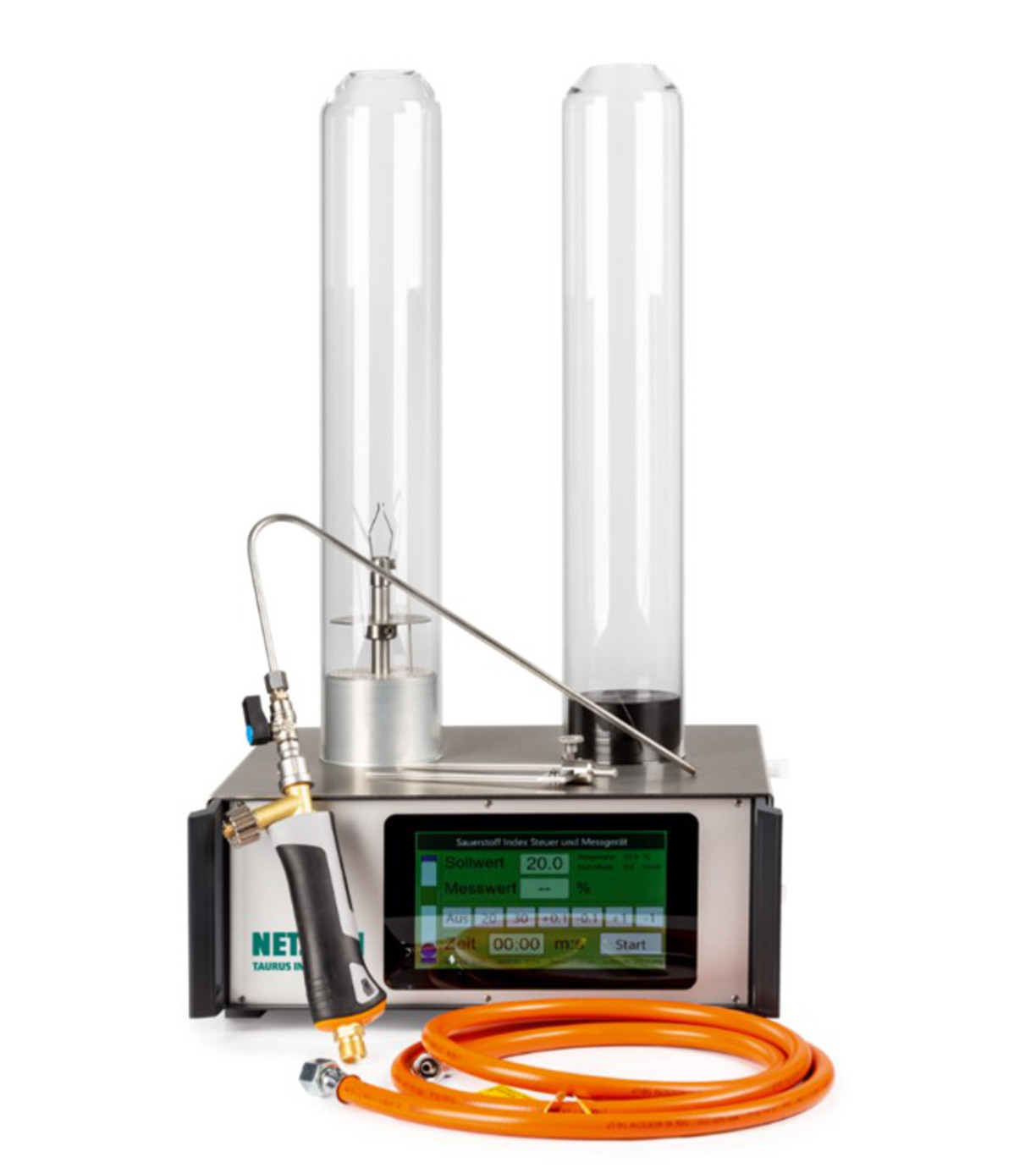
LOI 901 in the fire lab
Contact
Rhoda Afriyie Mensah
- Postdoctoral researcher
- 0920-491374
- rhoda.afriyie.mensah@ltu.se
- Rhoda Afriyie Mensah
Updated:
Page author: Contact us
